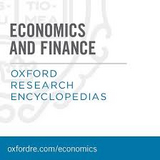
Shared prosperity: concepts, data, and some policy examples
Ferreira, Francisco H. G. / Emanuela Galasso / Mario NegreExterne Publikationen (2020)
in: Oxford Research Encyclopedia of Economics and Finance (online)
DOI: https://doi.org/10.1093/acrefore/9780190625979.013.445
Information
“Shared prosperity” is a common phrase in current development policy discourse. Its most widely used operational definition—the growth rate in the average income of the poorest 40% of a country’s population—is a truncated measure of change in social welfare. A related concept, the shared prosperity premium—the difference between the growth rate of the mean for the bottom 40% and the growth rate in the overall mean—is similarly analogous to a measure of change in inequality. This article reviews the relationship between these concepts and the more established ideas of social welfare, poverty, inequality, and mobility.
Household survey data can be used to shed light on recent progress in terms of this indicator globally. During 2008–2013, mean incomes for the poorest 40% rose in 60 of the 83 countries for which we have data. In 49 of them, accounting for 65% of the sampled population, it rose faster than overall average incomes, thus narrowing the income gap.
In the policy space, there are examples both of “pre-distribution” policies (which promote human capital investment among the poor) and “re-distribution” policies (such as targeted safety nets), which when well-designed have a sound empirical track record of both raising productivity and improving well-being among the poor.

